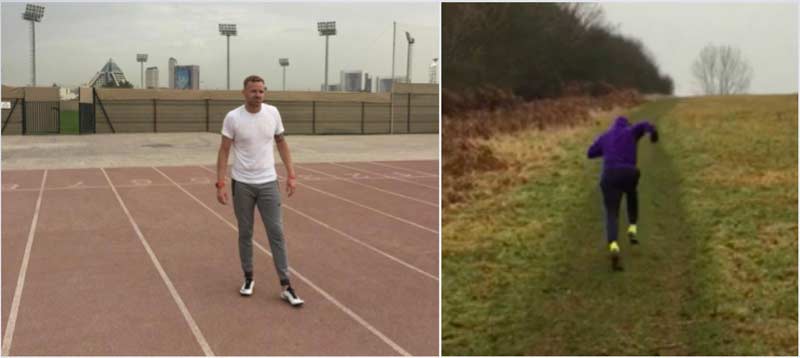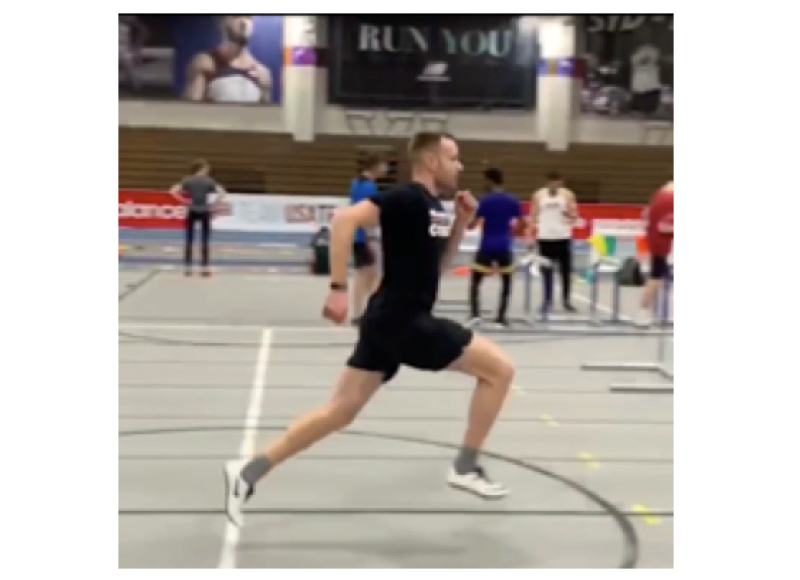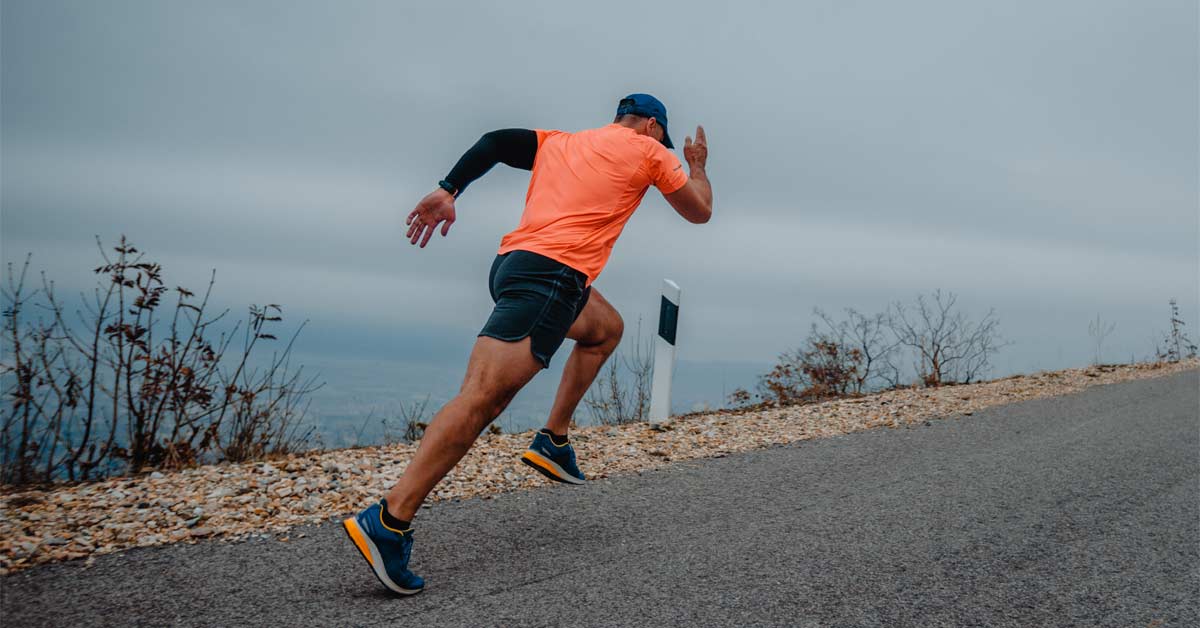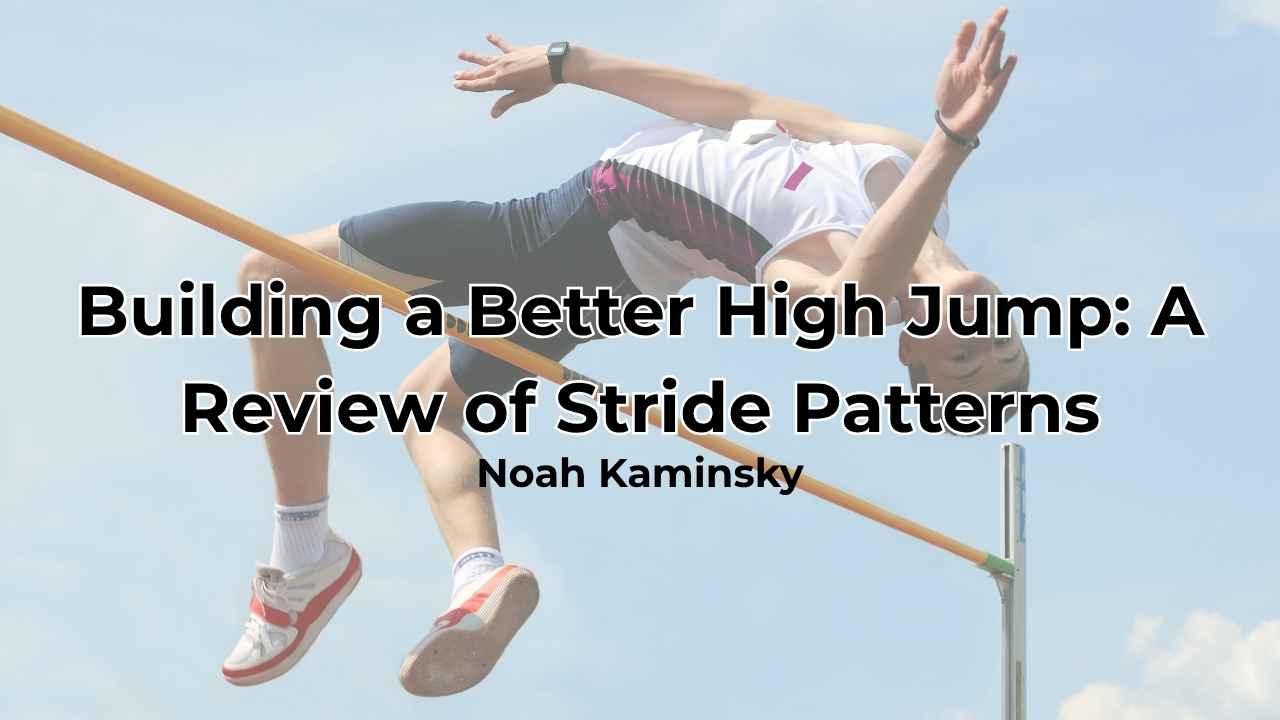One of the things I enjoy most with respect to sprint performance is looking at training programs, seeing what has taken place behind the scenes, and trying to piece together some of the clues that may have led to an athlete’s performance. As I alluded to in my last article, I believe there are many different paths to sprint success. Some sprinters appear to thrive off approaches based around high volumes of work and some appear to do better with lower volumes at higher intensities. Some sprinters have a fairly extensive strength training regimen, while others do not appear to lift much, if at all.
There seems to be a huge variation between athletes in terms of the training they do, yet they sometimes arrive at very similar results. This could be termed “inter athlete training variation,” but I have recently been thinking more about intra athlete training variation. That is, some of the changes an athlete makes in their own training throughout their career.
As someone who had my first competitive track and field season in 1998, I have had a fairly long “career.” (I don’t really like calling it that, because my mediocre performances don’t deserve such a label.) Due to exposure to many ideas, I have been able to try different approaches to training and make changes over the course of the last 22 years. In this article, I will outline some of my observations about my own path as an athlete and some considerations to help minimize the performance decrease as an aging sprinter.
Training Volume
Training volume is simply the amount of training you do. In track terms, it is typically written as the total number of meters completed in a training session, but in the weight room it could be expressed as the total number of kilograms or pounds lifted, depending on whether you are American or not!
At 17 years old, I joined the Milton Keynes Athletics Club (now Marshall Milton Keynes Athletics Club) and was coached by Mike Leonard, who had a lot of success with junior athletes around that period, most notably with Craig Pickering. Unfortunately, I did not keep training diaries at this point, but upon reflection (which can sometimes trick us without accurate records), I believe we did quite a large volume of general work. An example of a fairly general workout we often did in the winter was “winders,” as Mike called them, which was running the straights and jogging the bends. We would build up to two sets of five laps, which was 2,000 meters of what is essentially tempo running, and you could add to that an equivalent volume of jogging.
My view is that larger volumes of lower-intensity work may well have a place in the program of younger athletes, and the success of the training group at the time perhaps reflected this. This work allows for the development of more general qualities. It subjects the tissues to many contacts, thereby potentially making them more resilient, and the athlete learns how to function under varying degrees of fatigue. Anaerobic glycolysis and the aerobic energy system are developed, and these factors could allow the athlete to develop their capacity to train and recover from both efforts within a session and between sessions.
Charlie Francis, in his book Key Concepts Elite, states “training starts with general fitness and moves towards power over time. In other words, you can gain whole seconds in the 200 (and by extension a large reduction in the deceleration section of the 100) while initially you can gain only tenths in the first 30m.”
As a masters athlete, I am now exceedingly cautious in regard to how much volume I encounter in each session, says @davidmaris958. Share on XHowever, as a masters athlete, I am now exceedingly cautious in regard to how much volume I encounter in each session. I have had a recent history of Achilles issues, which is not too unusual amongst my population, and one of the things I have noticed that causes it to flare up is excessive volume. I tend to look at around 1,000 meters being the upper limit of what I have been able to safely tolerate in recent years with respect to my Achilles, which is plenty if I want to develop acceleration, speed, and to a large extent, speed endurance.
A typical acceleration session would consist of likely no more than 10 repetitions of 40-meter runs, equal to 400 meters, and even then, that may be a liberal estimate of appropriate acceleration volume. A typical speed development session may consist of no more than six efforts over 60 meters, equal to 360 meters, if the runs are being carried out with maximal intent, though that may not be necessary in every speed development session, as I will touch on later. I find that speed endurance sessions can be a little more varied, but typically they would not consist of much more than 600 meters or so.
As previously mentioned, I believe there are different paths for each athlete to develop optimally, and I believe I respond quite well to some degree of tempo. Therefore, this is where I have to ensure I exercise caution, and something like five runs over 200 meters—or 300, 250, 200, 150, 100 meters, or whatever other combination of runs you could imagine, totaling 1,000 meters—would likely be the limit of what I feel confident doing at the moment.

It may also be worth experimenting with different surfaces with regard to volume. Grass or turf are softer and may be easier on the tissues. I have found that hills tend to feel easier on my body, perhaps because the gradient means the foot has a shorter distance to travel vertically before striking the ground, therefore causing a reduction in the velocity at which the ground contact occurs. It may be as simple as it places a ceiling on the potential intensity, therefore allowing for a greater volume of work to be safely completed (more on the relationship between volume and intensity later).
An additional point worth making with regard to volume is that even if a given training volume is set for the day, the older I get, the more I try to get comfortable with walking away during a workout if something does not feel right. This, I have found, is quite a difficult skill to master, as there is a fine line between sensible in terms of mitigating injury risk and being overcautious (or potentially lazy), which leads to an athlete unnecessarily not completing enough work to get the desired stimulus on a regular basis.
Training Intensity
As volume is the amount of training done, intensity refers to the effort by which a training session is completed. Intensity is usually represented as a percentage of maximum output. On the track, you may calculate the average velocity obtained in a personal best performance for a given distance. Then you could work out the average velocity of a given rep and therefore what the intensity would be with respect to that personal best performance. In the weight room, intensity is generally expressed as a percentage of a 1 rep max for a given lift.
Throughout my first few years of training and into my early 20s, my perception is that the proportion of high-intensity sprinting in my training increased. As my training history increased, so did my tolerance to work, and as I was subjected to greater overall stimuli, I saw consistent improvements in my sprint performance. In my 30s, I have become more aware of the intensities I hit in training.
For years, my actions suggested that I was of the belief that sprinting was sprinting and therefore any speed development work was done maximally, or there was no point. I was very much in line with what has recently become the “Feed the Cats” movement. If your goal is to run as fast as possible, then it is fairly obvious that in training, at some point, you will also need to run as fast as possible. However, that perhaps does not necessarily mean it is the only thing an athlete should do.
More recently, I have started to consider the nuance in this concept, and as I alluded to in my last article, there may be benefits to carrying out speed development work at submaximal intensities. Doing so may help allow for better mechanics to be rehearsed along with rhythm and “smoothness.” Due to potentially more optimal mechanics, submaximal sprinting can therefore be a safer option, which is well worth considering for an athlete with a lot of entries in their injury history. And older athletes are likely to have experienced more injuries than younger athletes, as age is a known risk factor with regard to hamstring injuries, according to Craig Pickering’s article “Training the Masters Sprinter,” and they have been involved in the sport for longer.
Additionally, as I mentioned in the previous section, there is typically an inverse relationship between volume and intensity. That is, the harder you work, the less work you can complete. Therefore, operating at lower intensities can permit a greater volume of work to be completed (though in my case, not above 1,000 meters). This allows for the completion of more contacts, and therefore more opportunities to rehearse and practice sound mechanics, which ultimately increases the likelihood of technical competency becoming second nature. As mentioned, I think there is a place for maximal intensity runs in a sprinter’s training program, but I think it is worth asking the question, “How often do they need to be implemented?”
Håkan Andersson recently tweeted, “You have to dare to think 98% even when racing,” which I interpreted as alluding to the concept that the superior coordination and relaxation of submax efforts outweighed the extra couple of percent effort in terms of the resultant absolute output. This anecdote highlights the potential issue that intensity and perceived exertion are not necessarily synonymous. I do not claim to have all, or any, of the answers as relates to this, as these are ideas I am still juggling around in my head.
I have been leaning toward the idea that staying closer to 95% intensity is more appropriate for me to optimize performance and maintain health, says @davidmaris958. Share on XThe Charlie Francis literature put forward the notion that in order to develop speed, work needed to be completed at intensities of 95% or above. Recently, I have been leaning toward the idea that staying closer to 95% is more appropriate for me to optimize performance and maintain health. Deciding at which intensity to complete a workout can be a dynamic process. If an athlete initially plans to complete their runs at a very high intensity but has had a poor night’s sleep or a particularly stressful day at work beforehand, then there is no reason that the intensity of the workout cannot be downregulated. The reverse is also true, though I would recommend exercising caution in terms of how frequently very high intensity sprints are attempted, particularly with an older athlete.
Regulating training intensity is an example of a scenario where an accurate timing device, such as a Freelap, may be useful as a monitoring tool, to provide greater feedback that will better enable the performance of runs in the desired intensity range.
Training Density
We have covered the definitions of volume and intensity, and training density is very simply the volume of training completed within a given time frame. As volume and intensity have an inverse relationship, so do density and intensity. The less dense a session, the more intense it can be. Consider completing three runs of 200 meters with two minutes of recovery, or three 200 meter runs with 15 minutes of recovery. As mentioned above, I have become more cautious regarding the intensities I expose myself to, and manipulating the recovery times between runs, and therefore the density, is a tool we can use to help enforce the completion of efforts in the desired intensity range.
Manipulating the recovery times between runs, and therefore the density, is a tool we can use to help enforce the completion of efforts in the desired intensity range, says @davidmaris958. Share on XI tend to view density in two ways: the density of an individual session (as would be the case in the above example) and the density as it relates to the frequency of sessions within a given time frame (weeks, months, years).
As a teenager, while at high school, I typically trained three, or sometimes four, days per week, as was the standard in the British club system. As a side note, while beyond the scope of this article, this is a topic I find very interesting given the historical junior success of British sprinters on the international stage when compared to senior success. Over the past 30 years, British males have had a great deal of international junior success over 100 meters, and I would like to learn more about the changes made in the training of successful British junior sprinters as they transition to the senior ranks. In particular, I would like to learn more about the variable of density.
I began university late, at 20 years old, and what was then the University of Wales Institute in Cardiff (now Cardiff Metropolitan University) had excellent facilities, including an indoor 200-meter track with a weight room equipped with platforms and bumper plates right next to it. (This highlighted the professional attitude they applied to their athletic program.) This meant my training density increased to typically six days per week, with each of those consisting of either a track or weight room workout, or sometimes a combination of the two. My academic timetable allowed me to devote that much time to training without (many) repercussions, and as stated, my sprint performance improved.
After I completed my undergraduate degree, I began a Postgraduate Certificate in Education to qualify me to teach, which was a fairly intense year that involved full-time work placements, time in the classroom, and the submission of assignments. Throughout this period, I reduced my training density to typically between four and five workouts per week, usually three track sessions and one or two sessions in the weight room. As my professional commitments increased and I gained other responsibilities, it became more practical to diminish my training density to a maximum of four workouts per week, and I think this raises a really important point for masters athletes.
The vast, vast majority of masters athletes (notable exceptions include Asafa Powell, Justin Gatlin, Kim Collins, Mike Rodgers, and Churandy Martina) must work in addition to their training, and in many cases they may have advanced far enough up the career ladder to be in a role that lands them a good deal of responsibility, with the accompanying stress. Many masters athletes also have spouses and children (hopefully as supportive as mine). All these factors come together to create balance in an athlete’s life, but there is no denying that in order to have a successful career or a successful family life, time needs to be invested.
I see that time being taken away from training (to an extent) can be of benefit to an older athlete, in that it can help to enforce more complete recovery between sessions. I have read, on more than one occasion, about the idea that masters athletes often try to train as they did in their teens or 20s and get injured as a result. The responsibilities life throws at us can help prevent older athletes from falling into this trap, and if an athlete becomes overzealous in a training session, these responsibilities can help ensure a greater degree of recovery prior to the next workout.
I see that time being taken away from training (to an extent) can be of benefit to an older athlete, in that it can help to enforce more complete recovery between sessions, says @davidmaris958. Share on XIt is worth once again referring readers to Craig’s masters sprinter article with respect to recovery, as he alluded to the concept that increased recovery times in older athletes could be largely based upon perception. I consider the placebo effect to be a powerful one, and therefore simply feeling like you are better recovered, even if there is no additional physiological benefit, by waiting longer before the next training session could bring about more positive outcomes.
Additionally, it is worth considering that, as mentioned, masters athletes may encounter greater responsibilities, and therefore stresses, in other aspects of their life that may contribute to prolonging the recovery process. So, while age itself may not mean longer recovery times are required, other issues commonly associated with that era in an athlete’s life potentially may.
Weight Training
Before I began university, weight training was not really a part of my training regimen. I sporadically “went to the gym,” but in hindsight, I did not know what I was doing when I was there. Upon my move to Cardiff, weights comprised a significant part of my training program, and I typically lifted 2-3 times per week. I was introduced to the Olympic lifts, notably power cleans, as well as deadlifts and Romanian deadlifts, all of which I performed regularly, and I saw rapid developments in my strength.
More recently, I have begun to consider the role weight training plays in a sprinter’s development more carefully, and I currently feel that the negatives outweigh the positives in my own training. Gary Finegan, a good friend of mine who has been coached by Tom Tellez since 2006, eliminated weight training a couple of years ago, and he suggested to me that I try the same approach. Initially, I was resistant, likely due to the fact that British sprint culture in the mid-2000s had lifting, and power cleans in particular, as a central training component, which caused me to have a kind of emotional attachment to the weight room.
I have begun to consider the role weight training plays in a sprinter’s development more carefully, and I currently feel that the negatives outweigh the positives in my own training. Share on XThis year, the pandemic meant a lot of parts of the world were locked down. Massachusetts was no exception, and it was therefore not possible for me to access a weight room facility, which turned out to be my silver lining. Through the months of no lifting, I began to notice how much better my knees and back, in particular, felt, allowing for more consistent track workouts, which is where the training emphasis needs to be as a sprinter, in my opinion. It could be that my lifting form was poor and that led to the discomfort I experienced, but my bias is that I was taught how to lift by excellent coaches, and I believe my form was fairly solid.

My feelings are that, for most developmental sprinters, weight training is beneficial. But after they develop a foundation of strength, I question how much time they can spend in the weight room that will bring about adequate returns on the time investment. My current perspective is that, for myself, weight training falls into the “nice to do” category as opposed to the “need to do” category, and the time investment is better spent elsewhere, notably recovery between my track workouts.
In his article, Craig also points out that studies have found a decline in sprint performance was related to a reduction in type II muscle fiber. It may well be that I am not old enough yet to notice a performance loss related to type II muscle fiber reduction, but at the present, I believe the improved feeling with regard to my joint health outweighs a potential loss in muscle mass with respect to my sprint performance.
Measure the Risks vs. the Rewards
Every athlete is different, and therefore every masters athlete is different, and this will impact the changes they make to their training as they age. I have presented some of the factors I have evaluated in my own training over the years, and it is worth noting I have made many mistakes, but each mistake is a learning opportunity.
I think a common goal amongst masters athletes is to reduce the occurrence of injuries, as it can often feel like they take longer to recover from, says @davidmaris958. Share on XI think a common goal amongst masters athletes is to reduce the occurrence of injuries, as it can often feel like they take longer to recover from. The fact is that injury history is a strong predictor of future injuries (particularly with respect to hamstring tears), and when they cause more injuries further down the line, it has a snowball effect that becomes extremely frustrating. In my experience as an athlete, there is nothing worse than feeling like injuries constantly disrupt training, as it makes it far more difficult to progress. Therefore, the risk versus reward analysis of any decision about training needs to be taken seriously—it is just a case of learning what those risks and rewards are for you.
Since you’re here…
…we have a small favor to ask. More people are reading SimpliFaster than ever, and each week we bring you compelling content from coaches, sport scientists, and physiotherapists who are devoted to building better athletes. Please take a moment to share the articles on social media, engage the authors with questions and comments below, and link to articles when appropriate if you have a blog or participate on forums of related topics. — SF






